|
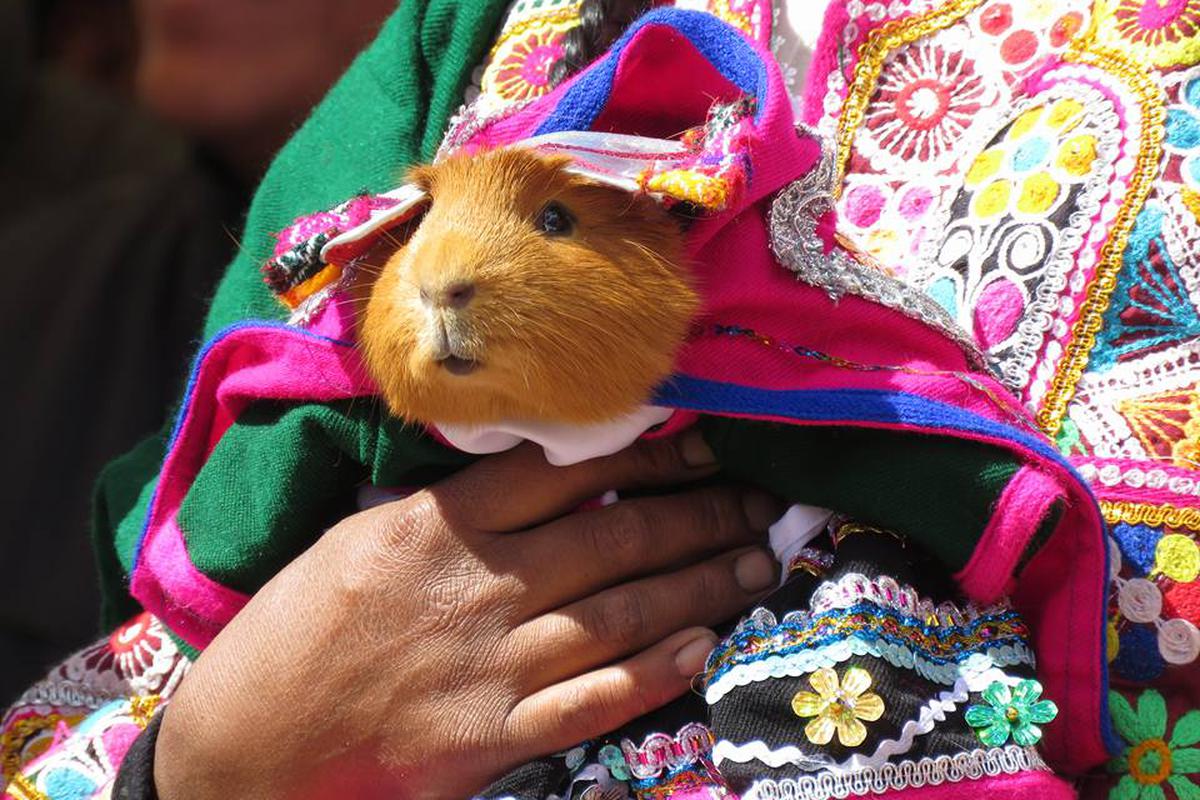
|
|
El Festival del Cuy: A Thematic Unit for Novice Spanish Learners
The Festival del Cuy in Peru is a fascinating celebration of a valued animal in this region of the Spanish-speaking world. In this festival, guinea pigs are dressed to the nines and displayed in fashion shows for all to see and admire. The best ones win prizes - and others are eaten. In this thematic unit, students reinforce novice-level vocabulary around themes like clothing, food, and animals through interpretive reading and viewing activities using authentic resources. Through the products and practices relating to the cuy, students explore the tension between animals as a food source and as a source of entertainment. They also debate a variety of cultural perspectives relating to humans' interactions with our pets and animals in general.
|
|
|

|
|
Un viaje virtual al Museo del Oro
The Museo del Oro in Bogotá, Colombia, is a world-class museum housing pre-Columbian artifacts from around Central and South America. In this thematic unit, students take a fantasy trip to Bogotá. After arriving in El Dorado Airport, students travel to Lake Guatavita to learn the legend of El Dorado, and then visit the museum, its galleries and exhibits, and learn about the history, art, and culture of the indigenous peoples of Colombia. As a culminating activity, students participate in an online adventure entitled Robo en el Museo del Oro in which they must find a theif and return a missing artifact to the museum.
|
|
|

|
|
The Happy Capybara | La capibara contenta
This thematic unit and accompanying materials takes students on an exploration of the South American capybara and all his many friends. Through images, videos, picturebooks, a printable student handout and an interactive PearDeck/Google Slides presentation, students learn about the capybara's habitat and debate the benefits of protecting this fascinating wild animal. Students reinforce novice level vocabulary around themes like las actividades, la comida, la ropa, and los animales through interpretive reading and viewing activities, presentational speaking and writing, and interpersonal speaking activities.
|
|
|

|
|
Teaching the Galapagos in the Spanish Classroom
The Galapagos Islands off the coast of Ecuador can serve as the thematic center for compelling and engaging lessons about ecology, the environment, and evolution. By learning about the incredible flora and fauna of these islands, students of Spanish come to know the importance of responsible stewardship of our natural resources. With a wealth of teaching resources such as videos, photos, worksheets, lesson plans, and other materials, teachers of Spanish to students of all proficiency levels will find inspiration and exciting topics to explore.
|
|
 |
|
A Lot of Axolotls! A thematic unit for teaching Science & Spanish
The axolotl, otherwise known as the Mexican salamander, is an endangered species of amphibian native to the area around Lake Xochimilco near Mexico City. Endearing and intriguing, the axolotl (or ajolote in Spanish) can serve a the center of a thematic unit for students of Science and Spanish of all ages and skill levels. Explore activities, materials and lesson ideas for elementary, middle school and high school students centered around these fascinating animals.
|
|
|

|
|
Piecing Together the Proficiency Puzzle
It can be so challenging to determine how well our students are doing in our language classes. What kind of feedback is most effective for language learners? How can we best assess our students’ proficiency in both language and culture? By exploring elements of backward design, the use of rubrics, standards-based and performance assessments and self-assessments using the can-do statements and portfolios, teachers can move from measuring what students know about the language to assessing what they can do in the language.
|
|
 |
|
Los Tres Reyes - Music of Protest and Social Commentary for Students of Spanish
The lyrics of target language songs have always been an excellent source of language, culture, and content in the language classroom. Three performers in particular, Rubén Blades, Juan Luis Guerra and Juanes, sing songs filled with social commentary and political messages that can both educate and engage students of Spanish. Consider ways in which songs of protest and social commentary can be used in our own classrooms as a means of accessing contextualized language and cultural products, practices, and perspectives.
|
|
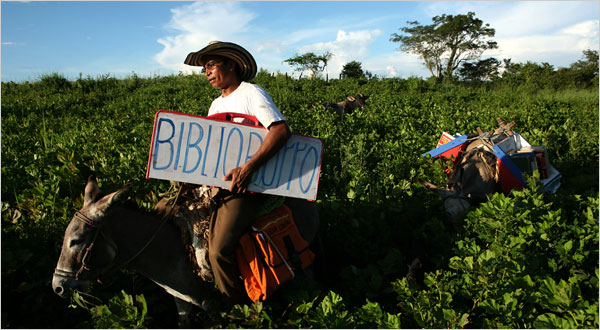 |
|
Social Justice and El Biblioburro
Language study can open a student's eyes to social issues around the world. In rural Colombia, teacher and child advocate Luis Soriano brings books to students who have little access to them. Traveling to schools throughout La Magdalena with his donkey library, or El Biblioburro, Soriano exposes young students to literacy and a love of reading. Learning about this grassroots project, students of Spanish can learn about georgraphy, socioeconomic inequities, and history while participating in class projects to improve the lives of others.
|
|
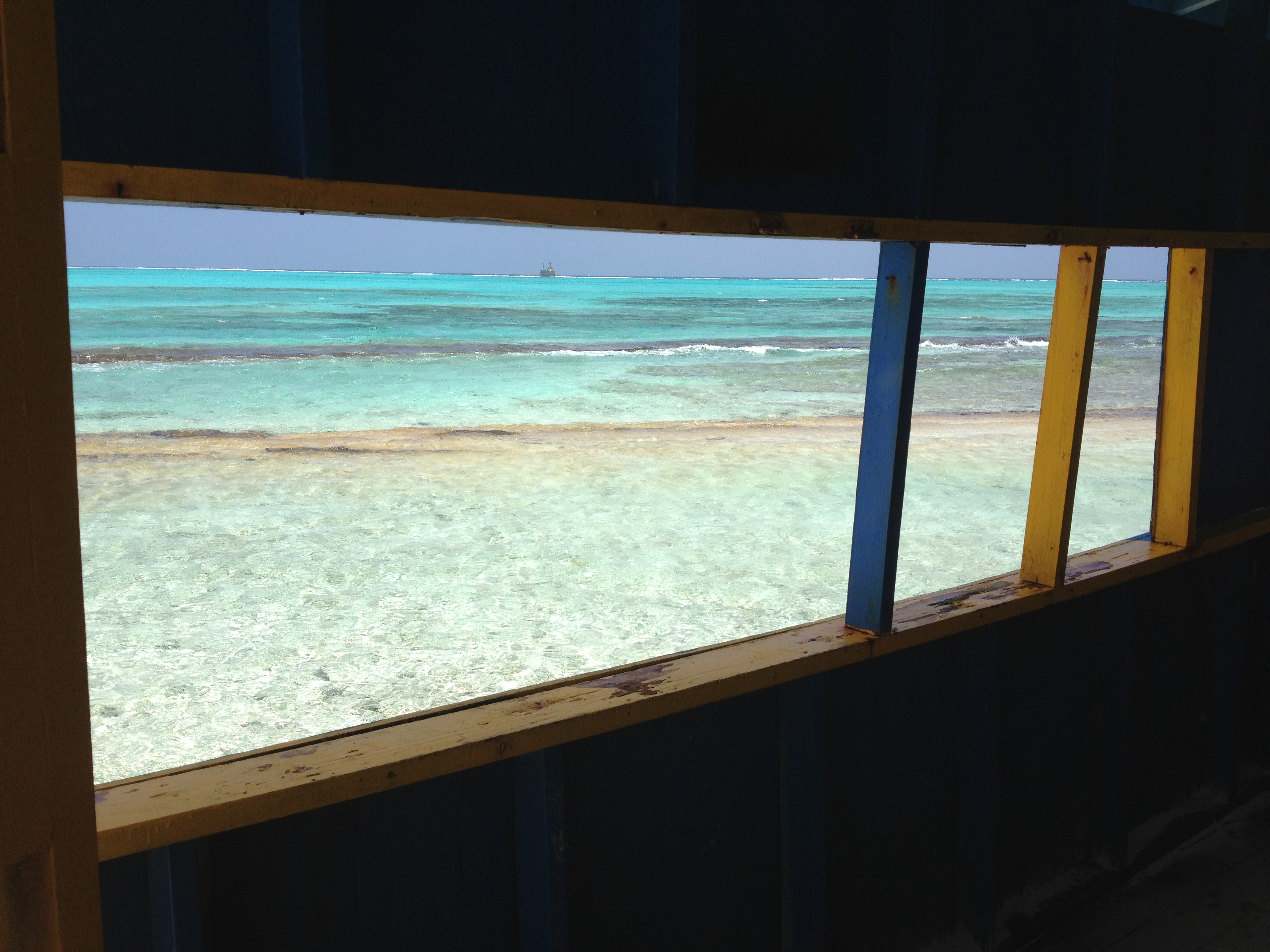 |
|
Windows and Mirrors - Best Practices in Language Teaching
Through viewing images of teachers and students engaged in excellent language teaching at a variety of levels, educators can explore research- and standards-based best practices and compare them to one's own craft in the language classroom. The images provide us with both “windows and mirrors”: in the mirrors we will see how our existing teaching reflects best practice, while windows allow us to peek out at new methods and strategies for improving the language learning experience for all learners.
|
|
 |
|
STEAM for Language Learners
A strong grounding in Science, Technology, Engineering and Math will prepare our children for a future in which these fields will be vitally important. With more and more focus on STEAM programs, language teachers can feel left out of the fun. But STEAM can provide rich opportunities for the development of thematic units that incorporate experimentation, hands-on work, and other project-based learning techniques – all in the target language!
|
|
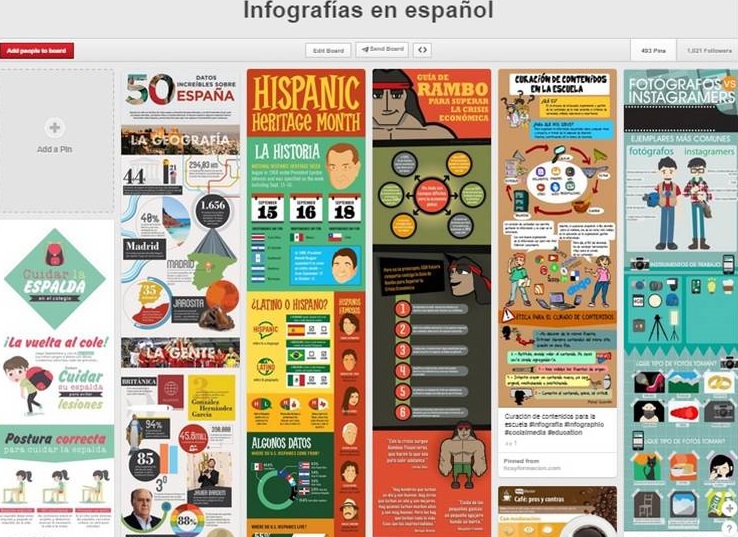 |
|
¡Qué Pinteresante! – Leveraging social networking tools for Teaching Languages
Language-learning websites abound on the Web, but none seem to have the special impact on student motivation as do social networking tools. Explore Pinterest (a virtual pinboard for collecting and sharing images), SocialBook (a reading platform for sharing comments and highlight text), and Delicious (a social bookmarking tool for organizing and sharing links and other information).
|
|
 |
|
Keeping It Real! - Authentic Materials for Teaching Languages
Authentic materials can be described as anything created for native speakers of a language. There are an almost limitless supply of materials available online that come directly from the target cultures of the languages we teach. These resources provide "real life" linguistic input as well as valuable cultural information for our students. Click on the title for a collection of authentic materials available online.
|
|
 |
|
All Work and No Play? - The Imperative of Play in the Language Classroom
Play is crucial in the language learning process. Games and fun activities help students feel excited on the affective level, while also reinforcing language acquisition on the cognitive and developmental level. Explore ideas for incorporating fun and playful (yet rigorous and effective) activities into existing World Language and EAL/ESL curricula.
|
|
|

|
|
Teaching Languages Online
Remote learning of languages can be a challenge - and it can also be a joy! There are so many opportunities in the virtual space to challenge students, connect with them in new ways, and get them talking. Webtools can engage even the most reticent of language learners and provide them with creative ways to show off what they can do in the target language. Hopefully this page can serve as an inspiration for the establishment of your own distance learning classroom, while also providing you with tools and ideas for how to leverage technology in the teaching of languages, even when you are IRL!
|
|
 |
|
Web 2.0 Tools for Languages
Our students are digital natives, while many of us are humble digital immigrants. How can we make sense of the many excellent web-based tools for teaching languages? Here is a brief description of some of these tools with videos and examples of how other teachers have already used them. The best way to learn about Web tools is to jump in and use them for yourself - so have fun!
|
|
 |
|
From Sprouts to Blossoms: Growing a Chinese Program
Starting a new Chinese language program in the K-12 setting can be challenging, but there are many online resources that can help in the process. Click for information and resources about teachers recruitment and certification, curricula, technology, assessments, and other materials that helped our schools to establish an exciting and thriving Mandarin Chinese program.
|
|
 |
|
Life and Weaving in Guatemala
Guatemalan folktales serve as the cultural center for a thematic unit for intermediate students of Spanish. Materials for teaching about Guatemala, including Mayan folktales "Ix Chel - La diosa de la luna" and "Como aprendimos a tejer," videos, folktales PowerPoint, and other materials. Also included are storyboard templates and PhotoStory tutorials.
|
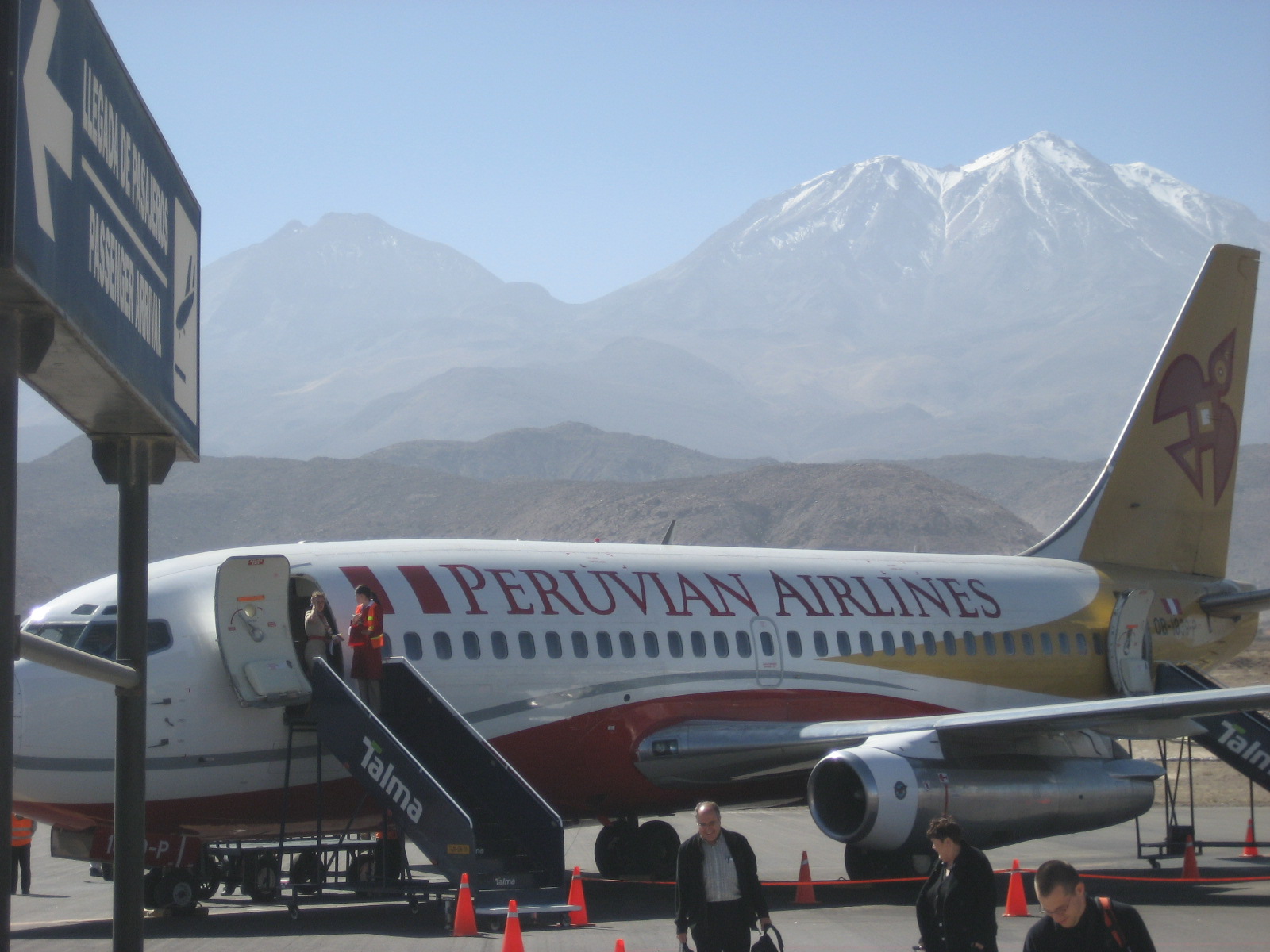 |
|
Peru for Spanish Teachers
The intersection between cultural practices and perspectives and products and perspectives are often the most challenging connections to make with students, yet they are also the most exciting and meaningful connections for young students of Spanish. Explore Peru through authentic children's literature, photos, realia and fantasy trips to Lima, Arequipa and Cusco.
|
 |
|
Diversity, Identity and Multicultural Education
Explore the role that culture and language play in a multicultural educational setting. Through activities and real-world examples, examine issues such as teacher identity, 21st Century Skills, and world language education as essential components for building a multicultural/multilingual community of excellence.
|
 |
|
Language Instruction that Works: Strategies for Successful Student Learning
Based on the book: Classroom Instruction that Works by Marzano et al, this presentation explores 9 simple teaching strategies that can be incorporated into all grade levels and across different subject areas as a means of improving student learning. Concrete examples, graphic organizers and activities are used to help bring these strategies to life in any classroom.
|
 |
|
Fantasy Trips in the Language Classroom
Student travel is always a source of inspiration and learning. Since we can't always take our students out of the classroom, fantasy trips are an excellent way to get kids thinking about culture and using the language for real-world purposes. Included in this collection of materials are passport templates, student handouts, rubrics, lesson plans, activities and more! Read an article about a fantasy trip to the Colombian coast, and view a PowerPoint presentation with tips and tricks to help you take your own fantasy trip.
|
|
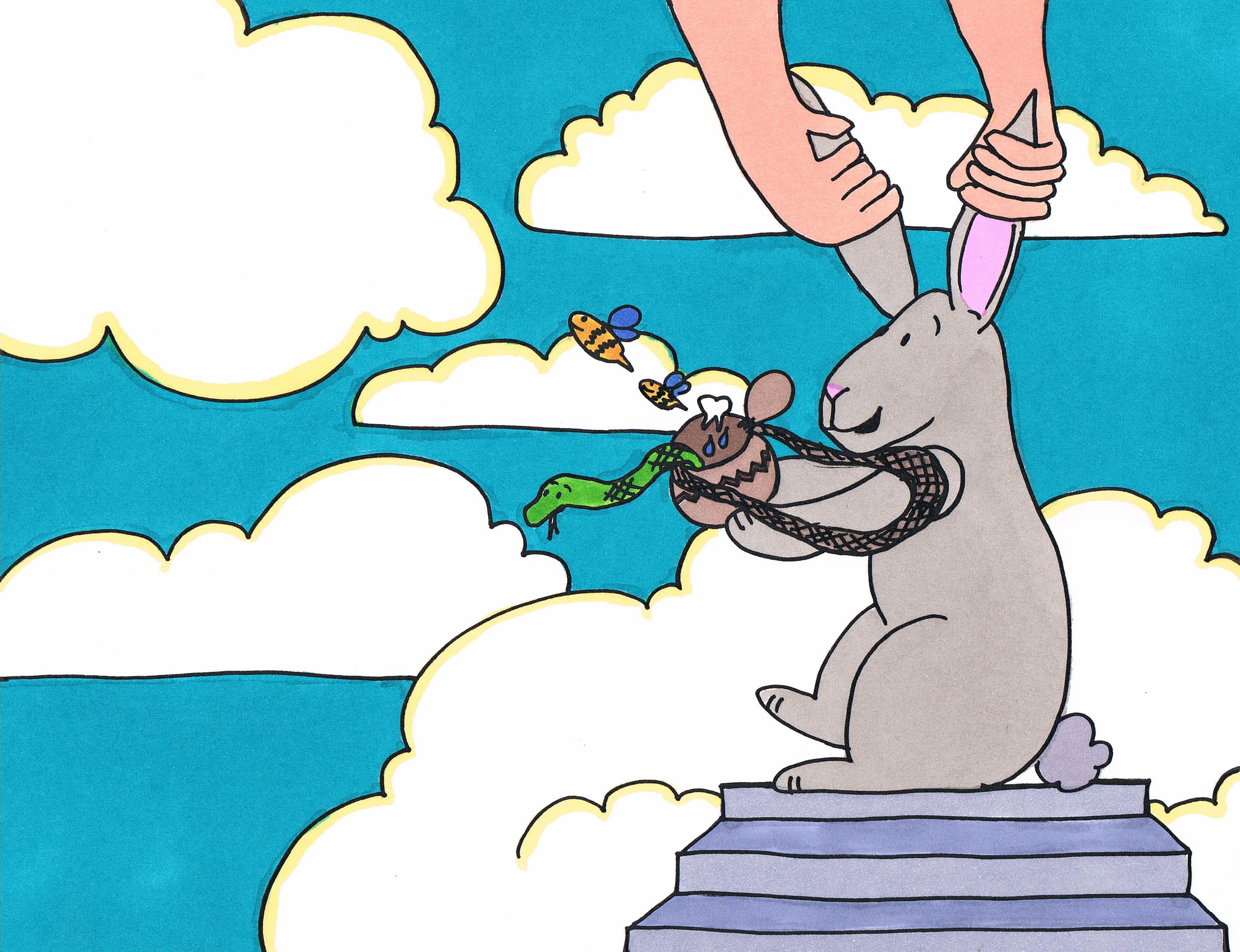 |
|
Folktales, Fables and Fun for teaching languages
Explore the use of folktales, myths, and other traditional tales in the language classroom. Stories from the target culture can provide students with a natural and enjoyable link to the morals, dreams, peoples and traditions of that culture. They can also serve as the thematic center to a curriculum unit on a variety of interdisciplinary topics, including science, social studies, art, and music. Access a PowerPoint presentation in which you can learn the rationale for the use of folktales, and discover links to online materials, activities, lessons and sample thematic units that incorporate folktales.
|
|
 |
|
The Flipped Foreign Language Classroom
Flipped teaching is a form of blended learning that encompasses the use of Internet technology to leverage learning in a classroom so a teacher can spend more time interacting with students instead of lecturing. This is most commonly being done using teacher-created videos that students view outside of class time. Access resources for exploring the flipped classroom, PLNs where educators are discussing blended learning and reverse instruction, and tools for designing your own flipped language classroom!
|
|

|
|
Products, Practices & Perspectives: Culture in the Language Classroom
The ACTFL Culture standards promote an understanding of the relationship between the practices and perspectives, and the products and perspectives of the culture studied. It is through the intersection of these “three Ps” that students can gain a deeper and more robust understanding of the target culture. By incorporating realia and other authentic materials into language lessons, teachers can provide students with culturally-relevant themes and topics through which to acquire language, culture and content.
|
|
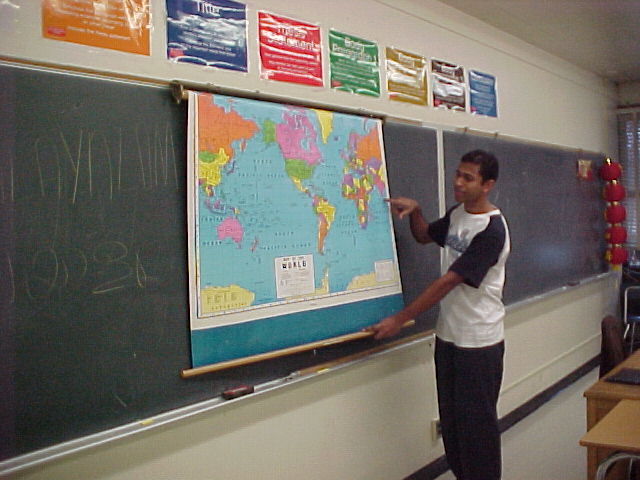
|
|
Teaching our Tongues: Student-run language classes
In schools around the world, we often boast a student body in which a multitude of different languages are spoken in our students’ homes. With such a wealth of linguistic diversity, it is important to find a way to celebrate students’ languages in a public and enjoyable way. Student-run language classes are an excellent means of tapping into the talent, generosity of spirit, and pride in home cultures and languages that exist in our schools. Learn about this student-focused project, view examples of different activities, and download templates for organizing your own series of language lessons!
|
|
